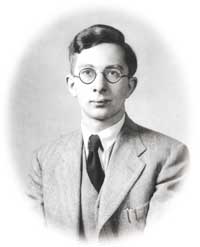Related Research Articles
Arthur Strong Wightman was an American mathematical physicist. He was one of the founders of the axiomatic approach to quantum field theory, and originated the set of Wightman axioms.

Mathematical puzzles make up an integral part of recreational mathematics. They have specific rules, but they do not usually involve competition between two or more players. Instead, to solve such a puzzle, the solver must find a solution that satisfies the given conditions. Mathematical puzzles require mathematics to solve them. Logic puzzles are a common type of mathematical puzzle.

Gaston Tarry was a French mathematician. Born in Villefranche de Rouergue, Aveyron, he studied mathematics at high school before joining the civil service in Algeria.
In the mathematical field of graph theory, a vertex-transitive graph is a graph G in which, given any two vertices v1 and v2 of G, there is some automorphism

Sudoku is a logic-based, combinatorial number-placement puzzle. In classic sudoku, the objective is to fill a 9×9 grid with digits so that each column, each row, and each of the nine 3×3 subgrids that compose the grid contain all of the digits from 1 to 9. The puzzle setter provides a partially completed grid, which for a well-posed puzzle has a single solution.
Sir Arthur Lyon Bowley was an English statistician and economist who worked on economic statistics and pioneered the use of sampling techniques in social surveys.

Robin James Wilson is an emeritus professor in the Department of Mathematics at the Open University, having previously been Head of the Pure Mathematics Department and Dean of the Faculty. He was a Stipendiary Lecturer at Pembroke College, Oxford and, as of 2006, Professor of Geometry at Gresham College, London, where he has also been a visiting professor. On occasion, he guest-teaches at Colorado College in the United States.
Sir John Frank Charles Kingman is a British mathematician. He served as N. M. Rothschild and Sons Professor of Mathematical Sciences and Director of the Isaac Newton Institute at the University of Cambridge from 2001 until 2006, when he was succeeded by David Wallace. He is known for developing the mathematics of the Coalescent theory, a theoretical model of inheritance, which is fundamental to modern population genetics.

Tony Hilton Royle Skyrme was a British physicist. He first proposed modeling the effective interaction between nucleons in nuclei by a zero-range potential, an idea still widely used today in nuclear structure and in equation of state for neutron stars. However, he is best known for formulating the first topological soliton to model a particle, the skyrmion. Some of his most important work can be found in selected papers. Skyrme was awarded the Hughes Medal by the Royal Society in 1985.
Sir Adrian Frederick Melhuish Smith, PRS is a British statistician who is Chief Executive of the Alan Turing Institute and President of the Royal Society.
Akshay Venkatesh is an Australian mathematician and a professor at the School of Mathematics at the Institute for Advanced Study. His research interests are in the fields of counting, equidistribution problems in automorphic forms and number theory, in particular representation theory, locally symmetric spaces, ergodic theory, and algebraic topology.

A standard Sudoku contains 81 cells, in a 9×9 grid, and has 9 boxes, each box being the intersection of the first, middle, or last 3 rows, and the first, middle, or last 3 columns. Each cell may contain a number from one to nine, and each number can only occur once in each row, column, and box. A Sudoku starts with some cells containing numbers (clues), and the goal is to solve the remaining cells. Proper Sudokus have one solution. Players and investigators use a wide range of computer algorithms to solve Sudokus, study their properties, and make new puzzles, including Sudokus with interesting symmetries and other properties.

Cheryl Elisabeth Praeger, AM, FAA, is an Australian mathematician. Praeger received BSc (1969) and MSc degrees from the University of Queensland (1974), and a doctorate from the University of Oxford in 1973 under direction of Peter M. Neumann. She has published widely and has advised 27 PhD students. She is currently Emeritus Professor of Mathematics at the University of Western Australia. She is best known for her works in group theory, algebraic graph theory and combinatorial designs.
Gordon Bamford Preston was an English mathematician best known for his work on semigroups. He received his D.Phil. in mathematics in 1954 from Magdalen College, Oxford.
Christopher David Godsil is a professor and the former Chair at the Department of Combinatorics and Optimization in the faculty of mathematics at the University of Waterloo. He wrote the popular textbook on algebraic graph theory, entitled Algebraic Graph Theory, with Gordon Royle, His earlier textbook on algebraic combinatorics discussed distance-regular graphs and association schemes.
Flight Lieutenant Paul Gordon Royle was an Australian Royal Air Force pilot who was one of the last two survivors of the 76 men who were able to escape from the Stalag Luft III German prisoner-of-war camp in World War II in what became known as The Great Escape.
Agnes Margaret Herzberg is a Canadian statistician who works as a professor of mathematics and statistics at Queen's University. She was president of the Statistical Society of Canada for 1991–1992, its first female president.